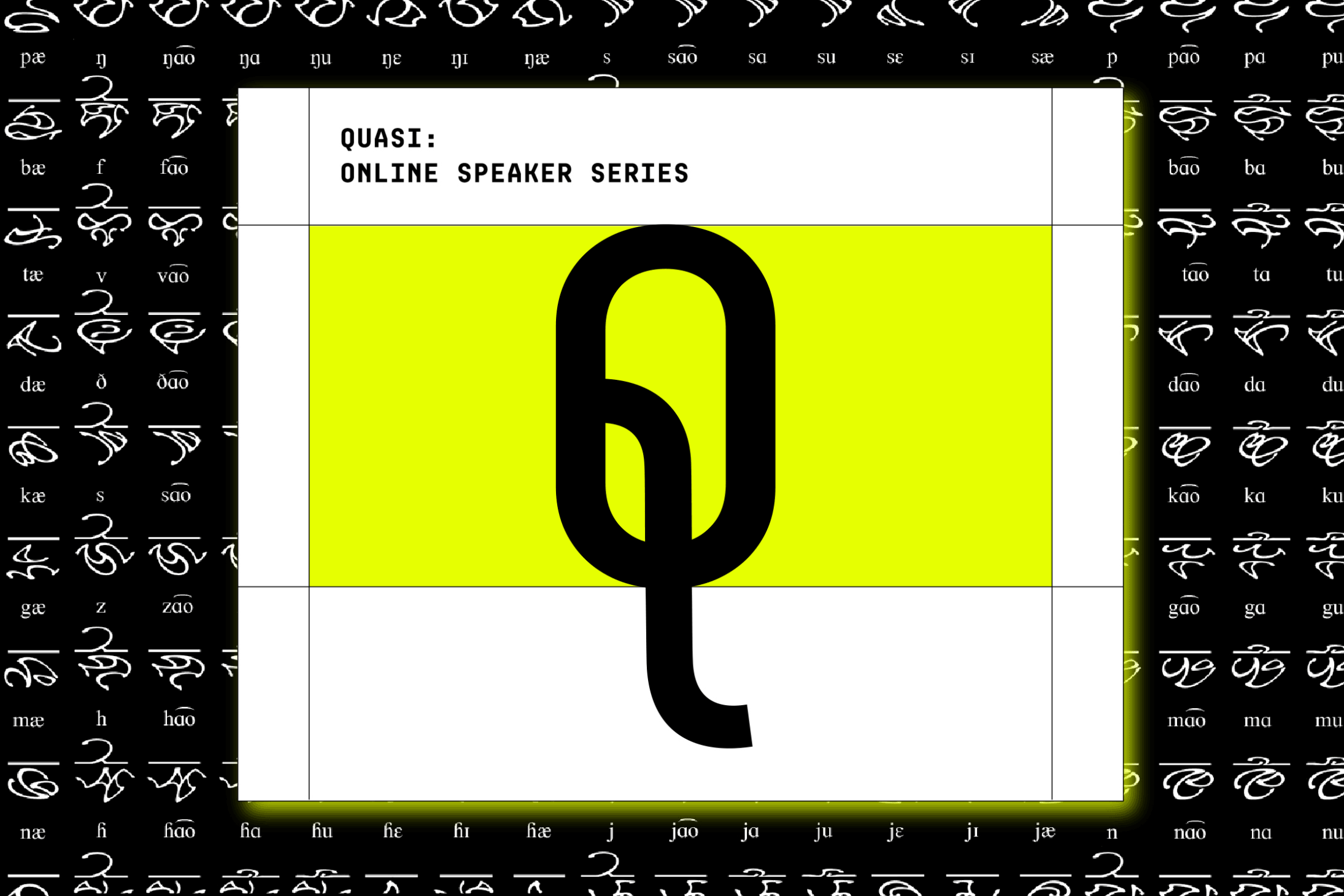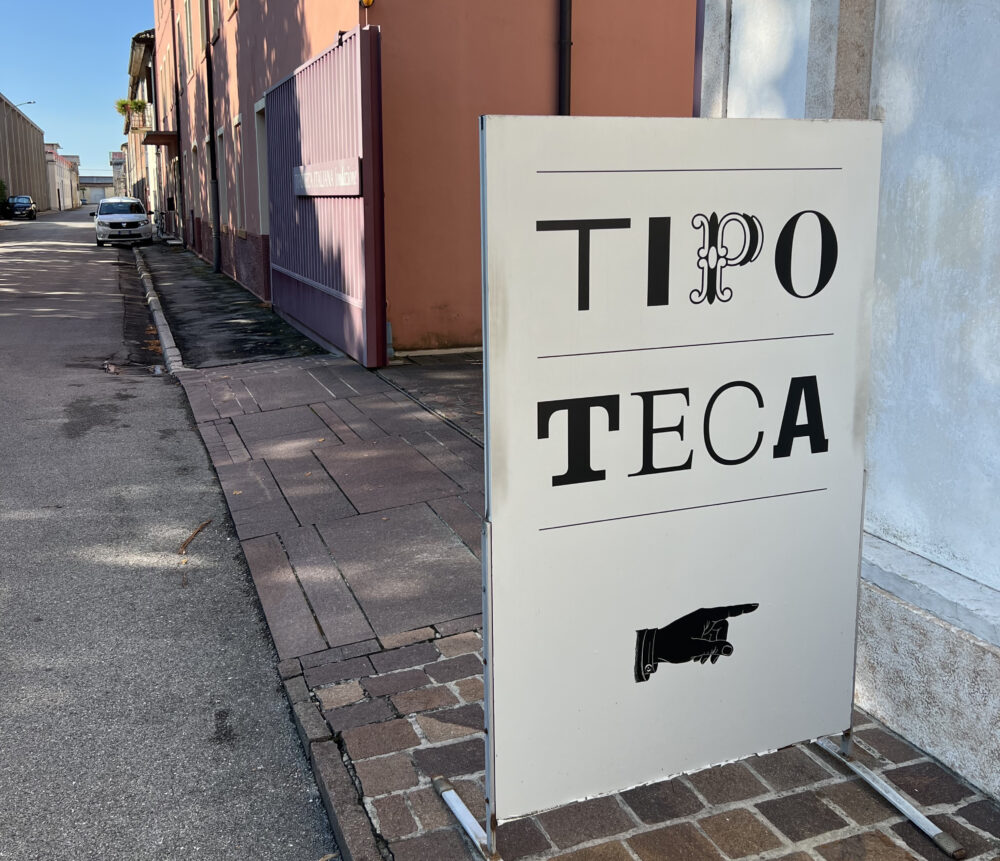This online speaker series centered around the exhibition Quasi: Experimental Writing Systems (currently on view at the HMCT Gallery through April 14), will feature a diverse lineup of designers, artists, and linguists. These experts operate in the world of invented and fictional writing systems, where typography meets language preservation, Hollywood’s sci-fi worlds, and linguistic innovations beyond anthropocentric perspectives.
Free and open to the public.
Session 1: Language Creation in Science Fiction
Thursday, March 7, 1–2 PM (Pacific Time)
Christine Schreyer & Louie Mantia
This session will study the crafting of fictional languages for science fiction films, revealing the complexities that enrich narrative world-building and captivate audiences. Linguistic anthropologist Christine Schreyer and alien type designer Louie Mantia will share insights into the creative processes behind Kryptonian for Hollywood’s Man of Steel film and the writing systems of Netflix’s Rebel Moon, illuminating the skill in constructing languages that breathe life into sci-fi universes.
Session 2: Crafting Personal Alphabets
Thursday, March 14, 1–2 PM (Pacific Time)
Calder Ruhl Hansen & C.C. Elian
This session will focus on the design of personal alphabets as a fusion of individual identity, artistic vision, and cultural influences. It will explore inventive journeys of creating alphabets that merge written language with personal expression. Calder Ruhl Hansen will present his method for developing unique writing systems, drawing inspiration from Canadian Aboriginal Syllabics, math, and other influences, employing innovative techniques to forge meaningful symbol systems. C.C. Elian will discuss Elian Script, an alphabetical script rooted in the Latin alphabet that echoes the aesthetic qualities in Asian calligraphy.
Session 3: Language Representation & Preservation
Thursday, March 21, 1–2 PM (Pacific Time)
Ibrahima Barry / Abdoulaye Barry & Zeke Oyinloye
This session will showcase how creating new scripts is crucial for cultural preservation, enabling the documentation and revitalization of at-risk languages. Brothers Ibrahima and Abdoulaye Barry will discuss the creation of ADLaM, a script designed for the Fulani language widely used across a vast region of West and Central Africa. Zeke Oyinloye will share his process of creating Kiko, a writing system that better represents the Yoruba language spoken primarily in Nigeria and parts of Benin and Togo. The discussion will also stress the importance of linguistic diversity, illustrating how typography can contribute to maintaining the broad spectrum of global languages.
Session 4: Writing with the Natural World
Tuesday, March 26, 1–2 PM (Pacific Time)
Marianne Hoffmeister / Patricio Gonzalez & Yuchen Chang
Exploring the intersection between the natural world and linguistic innovation, this session examines how environmental inspirations lead to unique writing systems and typographies. Visual artist Marianne Hoffmeister and type designer Patricio Gonzalez will present Castor, a typeface created by tracing beaver teeth marks. Yuchen Chang will discuss the Coral Language project, which interprets corals’ complex forms and colors into a distinctive language, showcasing how natural patterns can inspire linguistic and design elements. The session will reflect on the capacity of language and design to extend beyond anthropocentric perspectives, incorporating expansive and inclusive viewpoints.
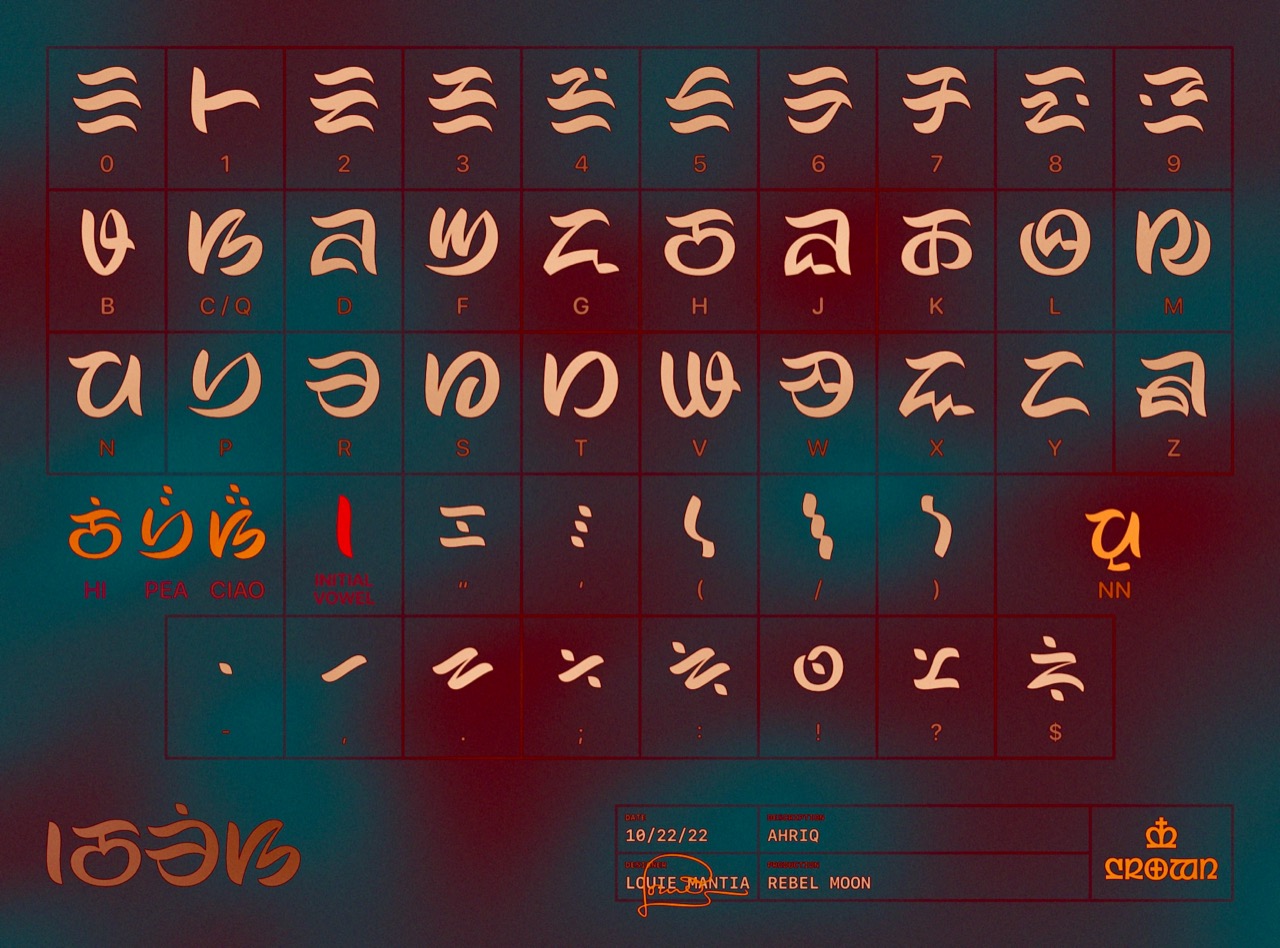
Speaker bios
Dr. Christine Schreyer is an Associate Professor of Anthropology at the University of British Columbia, Okanagan campus, where she teaches courses in linguistic anthropology and Indigenous language revitalization. Her research focuses on language documentation and created languages communities. She has conducted research with the Na’vi speech community (from the movie Avatar), and she is also a professional language creator, known for the Kryptonian language (Man of Steel, 2013), the Eltarian language (Power Rangers, 2017), the Beama (also known as Cro-Magnon) language (Alpha, 2018), the Atlantean language (Zack Snyder’s Justice League, 2021), and the languages of Samdrait, Sharanese, and Imperium (Rebel Moon, 2023).
Louie Mantia, Jr. is an artist and designer working in Tokyo, specializing in icon design. He has developed expansive icon systems for Nike, Disney, Pixar, Meta (for Messenger, Instagram, and Facebook), Twitter, Patreon, and Notion. His work creating icons and emoji led to typeface design and font creation, which materialized as a nearly 4,000-character font, with support for Latin, Greek, Cyrillic, Katakana, 20 stylistic sets, 500 icons, and over a thousand ligatures. Louie then made his first contribution to film with Zack Snyder’s Rebel Moon, where he developed Imperium, Veldt, Providence, and Ahriq writing systems.
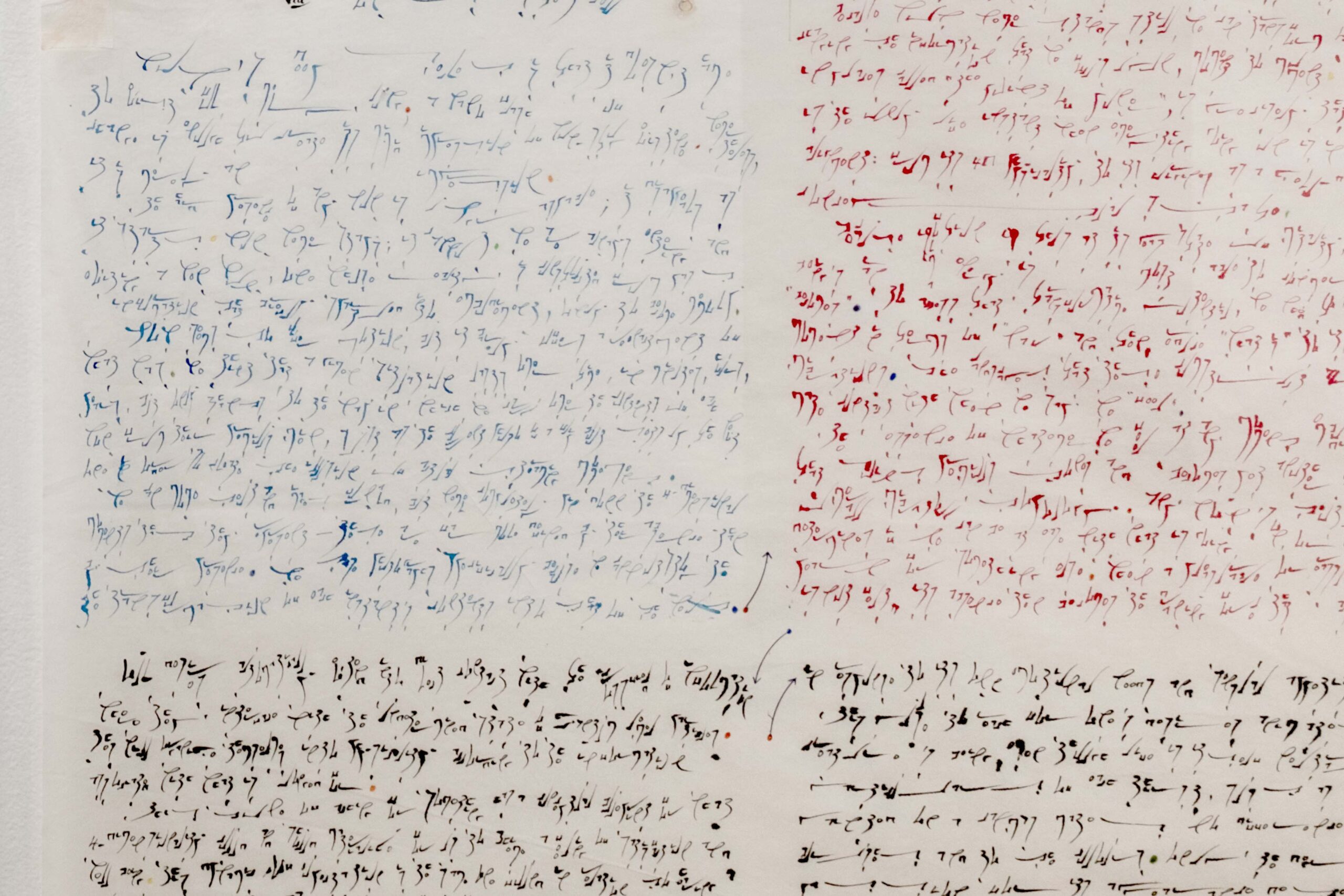
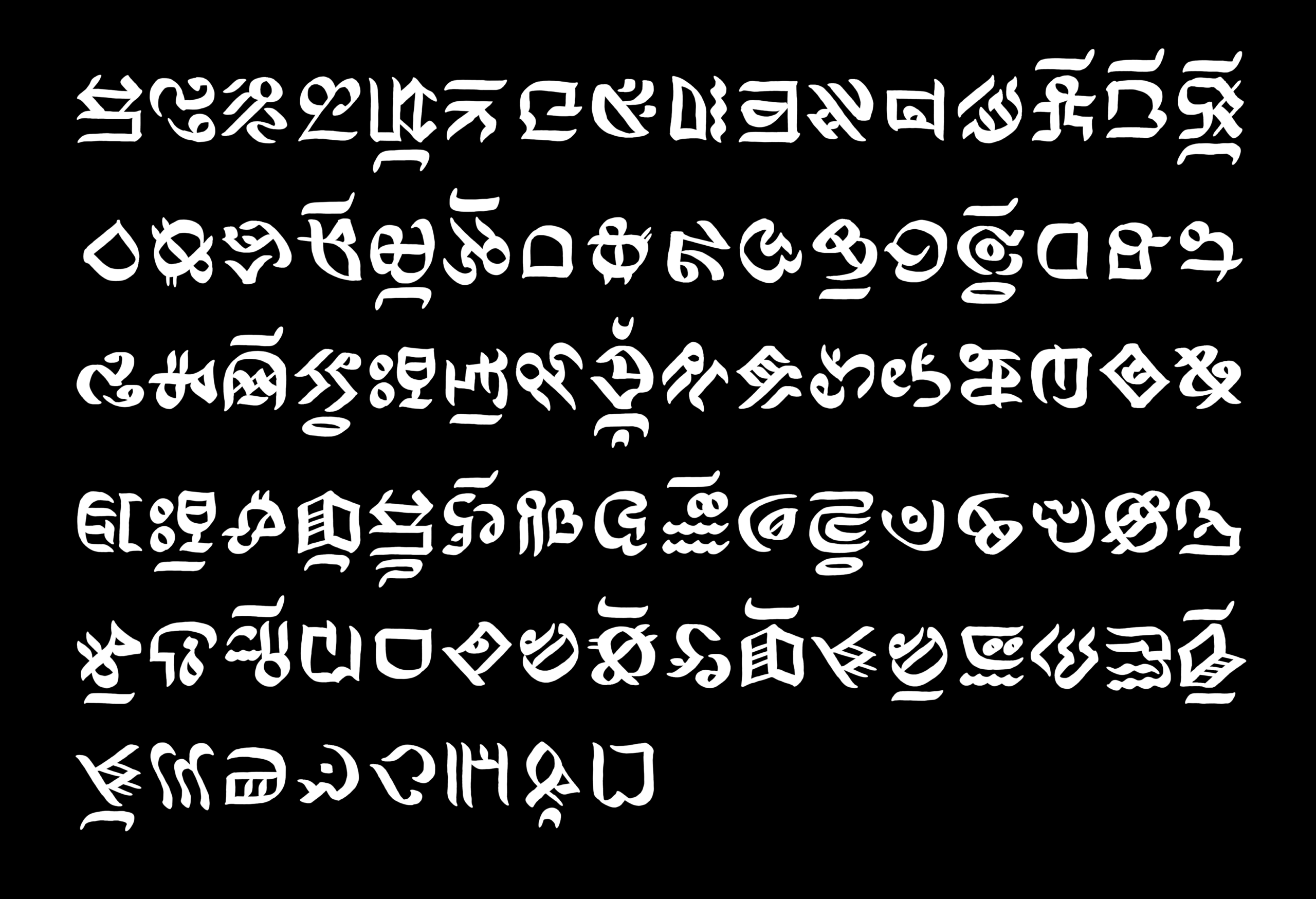
C.C. Elian was born in France and grew up in New York City, where she studied painting under Brice Marden at the School of Visual Arts. Her artist’s day job at Push Pin Studios working for Milton Glaser introduced her to the world of design, which led to becoming a graphic design consultant in LA. She has worked on projects for the Rolling Stones, Eric Claption, Warner Bros., Movies magazine, and others. C.C. eventually earned a degree in social sciences from Washington State University, and subsequently wrote Write Makes Right: Writing Systems & Cultural Worldviews. She is the creator of Elian script, and the Chromatic Alphabet, and continues working on language-based art projects in Washington State and Switzerland.
Calder Ruhl Hansen is an artist from California currently living in Providence, Rhode Island, where he recently graduated from Brown University. He has a deep appreciation for beautiful shapes and elegant systems, and has gained experience working with both through formal education in type design and computer science. These topics, and related ones like mathematics and linguistics, blend and influence each other in his writing systems and other projects. He aims to create work that is engaging on three levels: the visuals, the underlying meaning, and the abstract system by which the visuals represent that meaning.
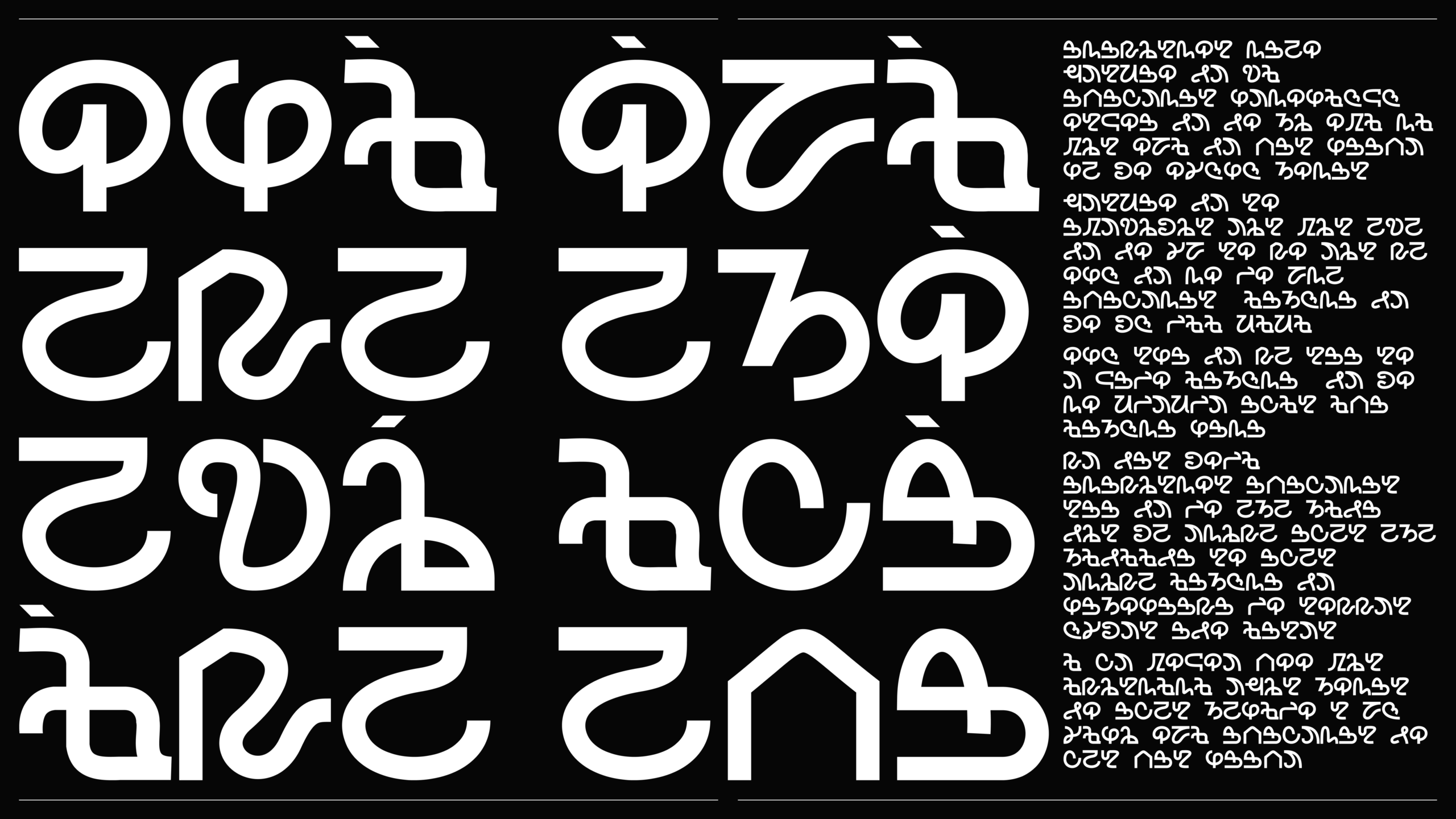
Zeke Oyinloye, a designer and art director hailing from Port Harcourt, Nigeria, employs a context-driven approach to seamlessly fuse modern techniques with cultural perspectives. This unique blend gives birth to thought-provoking creations that delve into the intricate intersection of language, culture, and space. Oyinloye’s creative journey is predominantly guided by typography, encompassing its design, application, and experimental facets across a variety of themes and subjects, resulting in a rich tapestry of outcomes. Drawing inspiration from history, legend, and myth, he ardently endeavours to construct a bridge between the present and the past through his work.
Abdoulaye Barry (bio coming soon)
Ibrahima Barry (bio coming soon)
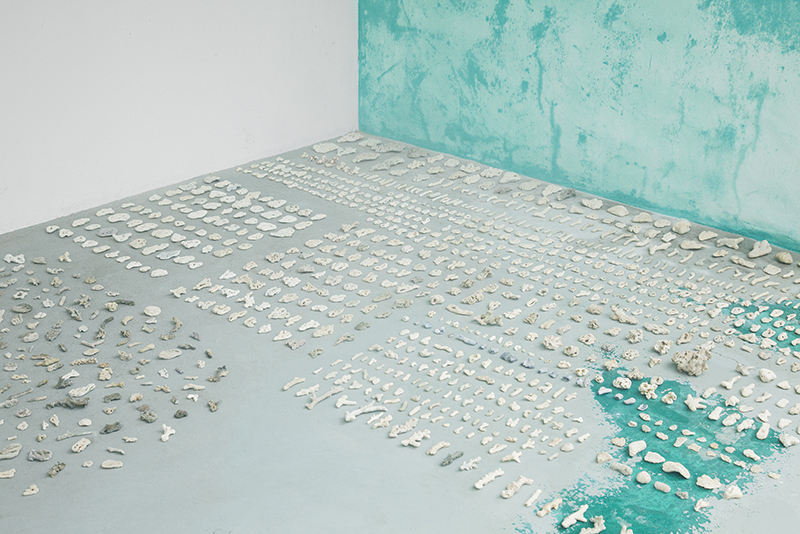
Marianne Hoffmeister Castro is a Chilean multidisciplinary visual artist and educator based in the United States. Her work examines the representation of nature and animality in the contemporary western world. Working with drawing, installation, film, experimental writing and collaborative research-based processes, she proposes non-anthropocentric storytelling strategies to reimagine new modes of relation and iconographies of empathy with nonhuman domains in times of existential and ecological crisis. She holds a BFA from Pontificia Universidad Católica in Santiago, Chile and an MFA from Carnegie Mellon University, Pittsburgh. Marianne has exhibited and screened work in Chile, the United States, Ecuador, Peru, Switzerland, and Korea. Last year she was the St. Elmo Fellow at UT Austin and Lady Bird Johnson Wildflower Center, and the artist in residence at Núcleo de Lenguaje y Creación at Universidad de las Américas, Chile (2022 – 2023).
Patricio González Salamanca is a type designer and holds a master’s degree in art research. He is a founding partner of W Type Foundry, a space dedicated to the creation of typefaces and the dissemination of knowledge in this discipline. His work as a typographer focuses on the creation of conventional typefaces, as well as the exploration of written language as a cultural phenomenon. He has taught at various universities in Chile and has expanded his teaching through exploration and a collaborative project called Collabtype. His research method is based on design practices and type design, adopting a generalist and multidisciplinary approach.
Yuchen Chang works in an interdisciplinary manner—writing as weaving, drawing as translation, teaching as hospitality, commerce as social experiment (Use Value) and publishing as a dandelion spreading its seeds. By constantly entering and exiting each medium, she strolls against the category of things, the labor division among people. Yuchen was a recipient of Kahn | Mason SIP Fellowship, Poetry Project Curatorial Fellowship, Huayu Youth Award Grand Jury Prize, Ruth and Harold Chenven Foundation Grant, and Luminarts Fellowship. She has shown/performed her work at Artists Space, Amant, UCCA Dune, Power Station of Art, Para Site, Taikwun Contemporary, Beijing Commune, and more. She was an artist in residence at Asymmetry Art Foundation, MASS MoCA, Museum of Art and Design, NARS x Governors Island, Robert Blackburn Printmaking Workshop, Textile Arts Center, and is currently an artist-in-residence at Smack Mellon. Yuchen has written for publications including Heichi Magazine, Press and Fold, Art in Print, Randian, and she lectures/teaches at Yale University, University of the Arts, Center for Book Arts, Printed Matter, among others.
